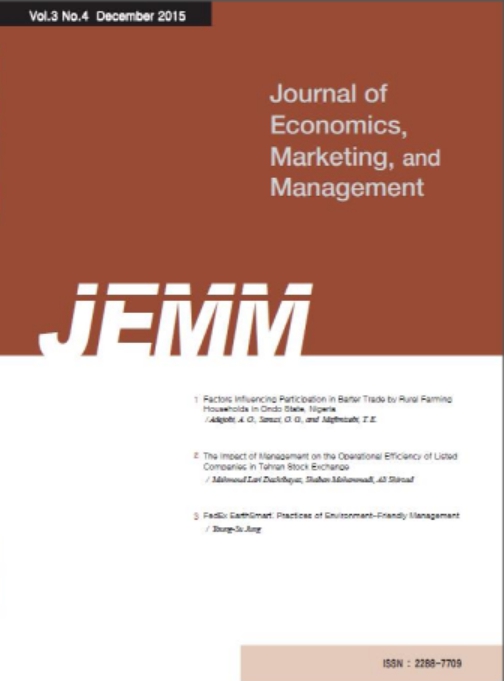- Log In/Sign Up
- E-ISSN2288-7709
- KCI
 E-ISSN : 2288-7709
E-ISSN : 2288-7709
Browse Articles
e-SubmissionVol.10 No.4
Abstract
Purpose: The purpose of this study is to explore how customers perceive virtual mirror technology in the 4th industrial revolution environment. In particular, this study investigated how virtual mirror technology affects customer satisfaction and intention to use that are rarely examined in previous studies. Research questions include how proposed variables including sensory stimulation, enjoyment, product quality, telepresence, interactivity, and immersion affect satisfaction and intention to use and how satisfaction affects intention to use. Research design, data and methodology: This study conducted an online survey and applied factor and regression analyses to test hypotheses. Results: The results of this study found that effects of sensory stimulation, telepresence, and immersion on satisfaction were significant, while effects of enjoyment, product quality, and immersion on intention to use were significant. Therefore, variables affecting satisfaction and intention to use were different, while effects of immersion were significant both on satisfaction and intention to use. Conclusions: This study concluded that the role of virtual mirror technology helps customers determine product quality and increase satisfaction level, while it also helps customers enjoy shopping and increase intent to use the service. The results of this study provide how to foster better relationship with customers by applying advanced technologies.
Abstract
Purpose: Although numerous research has covered content on trends in the adoption and use of wearable devices, their uses across several sectors such as healthcare, gaming, and fashion, there seems to be a considerable paucity with regard to empirical research focusing on the solutions for factors that undermine the effectiveness of wearable devices in healthcare. The present research aims to highlight what has been covered on wearable devices in healthcare while highlighting the limitations for future research. Research design, data, and methodology -The present authors conducted one of the most famous qualitative literature approach which has been called as PRISMA (Preferred Reporting Items for Systematic Reviews and Meta-Analysis) statement. The selecting criteria for eligible prior studies was estimated by whether studies are suitable for the current research, identifying they are peer-reviewed and issued by notable publishers between 2017 and 2022. Result - Our results indicated that (1) Increasing the Affordability and User Education on Wearable Devices in Healthcare (2) Tackling the Technological Issues in Wearable Devices to Promote Healthcare Delivery (3) Solving Security and Privacy Issues Associated with Wearable Devices (4) Promoting Standards and Appropriate Regulations for Wearable Devices. Conclusion - To add, resolving the technological issues associated with wearable devices in healthcare will ensure that the new devices in the market will have longer battery life, multiple functions, and enhanced accuracy, thus ensuring that patients receive better care. Necessary interventions are taken on time to avoid any deleterious consequences such as proliferating mortality rates among the different patient groups.
Abstract
Purpose: Technology and innovation drive new mobile application for ojek online. Using the theory of technology acceptance model and perceived risk theory, the researcher wants to find how these factors affect user's intention to use GO-FOOD that leads to technology adoption. Research design, data and methodology: The researcher uses GO-FOOD users that located in East Java, Indonesia for the object of study. Results: The findings of the research discovered that perceive usefulness and perceive ease of use do not significantly affect user's behavioral intention while perceive risk is significantly affecting the user's behavioral intention. Conclusions: The findings suggested that GO-FOOD or similar application should focus more on reducing or eliminating user's perception of risk towards the mobile application













